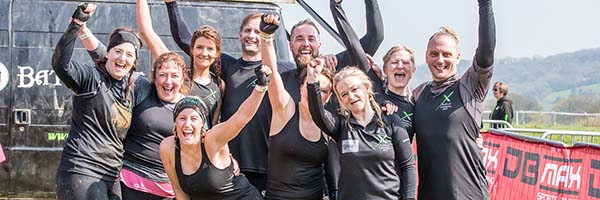Recovering from an obstacle course race can be a struggle and isn’t something to be overlooked. It should be a high priority as soon as you cross that finishing line…or at least after the beer and burger! Joking aside, the recovery process should begin as soon as possible if you don’t want serious DOMS (delayed onset muscle soreness) for the next few days. DOMS will leave you sore, tender and walking down the stairs backwards (if you know, you know).
Recovery strategies will also help prevent against any post-race injuries.
When the body is faced with activities that require high intensity movements like OCR, temperture changes and the duration you are working for, it produces a lot of waste product (lactic acid and inflammation) that needs to be cleared from your system.
So how do you best recover from an OCR?
- Hydrate. Replacing lost fluids with water (and a beer) after vigorous exercise should be high priority to eliminate any cramping. Now’s when a cake of fizzy drink is ideal as it’ll also contain sodium – an electrolyte lost in your sweat.
- Get your nutrition right. Everyone’s heard of the ‘30min window’ in which you should aim to consume some food. Go for high carb and protein foods to replace glycogen store, stabilise blood sugar levels and start the muscle-repair process.
- Elimiate waste products. In other words, put your feet up (literally!). Elevating the legs will help rid your body of toxins accumulated during the OCR – this reduce muscle soreness.
- Keep warm. Along with the top two above points, this should also be a high priority straight after finishing an OCR. When exercising our core temperature goes up. When we sweat our bodies are working hard to regulate our core temperature. But as soon as we stop, it drops rapidly and you can become cold quickly. Make sure you have a change of clothes ready and access to somewhere warm. This will help the muscles from becoming stiff and tight too.
Remember above all, listen to your body and do what feels right. Don’t rush straight back into training the next day. Adjust and monitor the days after a race and aim to cover the above points to help quicken that recovery process for you.
Back to Blog



